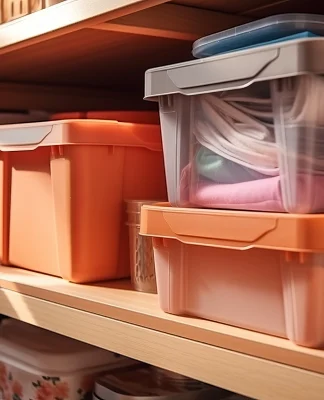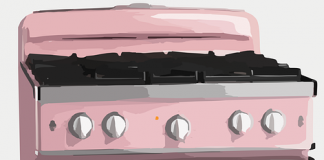Whether winter is coming or going, chances are you will be making a massive wardrobe change.
It can be hard when you live in such a drastically changing climate, but it doesn’t have to ruin your clothes. Taking a few extra steps when storing your winter clothes each season can make a huge difference.
Properly caring for, and storing, clothes means that you will get more out of them and keep them looking better than ever. It also means that when you need to retrieve your winter clothing, things will go much easier. That’s why we’ve put together our top 5 suggestions to store your winter wardrobe for an easy retrieval.
-
Preparation
One of the most important things of storing your winter wardrobe for easy retrieval is making sure that everything is cleaned, repaired and organized prior to putting things away. Doing all of these things will make things run much more smoothly when it comes time to take them out of storage.
Donate
It’s inevitable. As each year passes our tastes change along with the differing styles and fashions. What we put away last year may not be our favorite this year. That’s why our first suggestion is to go through all of your clothes and see what you still love and what you might never wear again. Put all of the items you don’t want into a pile and either donate them to charity, hold a garage sale or see if any friends and family would like them. Don’t put them in storage thinking that maybe next year you’ll like it again. The chances of that are slim to none and all it does is take up space and give you more work.
Clean
Once you’ve gone through your clothes and determined what you will be putting away in storage, it’s time to make sure that they are cleaned thoroughly. Dirty clothes can bring about a myriad of problems when you store them for an extended period of time. If your clothes smell bad when you put them away, you’ll not only attract pests but your clothes will also start to produce even more nasty odors and probably begin growing mold or mildew. This is not a fun surprise to find when you open up your storage container the following winter.
Surprisingly, just as dirty clothes cause problems, clothes with perfumes or lotions on them can also cause unwanted results. When an article of clothing that contains one of these is stored, over time the product can cause the fabric to turn yellow, stain or even start to degrade. This is because perfumes and lotions can contain harsh chemicals that aren’t natural for fabrics to come in contact with for long periods of time.
Therefore, make sure that you wash all of your clothes prior to storing them in the hottest water you can that won’t ruin clothing. Remove any stains that are visible so that they don’t get worse during storage and then machine wash all items that don’t need to be professionally cleaned. Get delicate articles of clothing made of cashmere, silk or wool dry cleaned. We also recommend cleaning your shoes since winter is so harsh on them. Remove any salt buildup and polish and condition shoes made with a more delicate material. Taking these steps to clean your wardrobe will ensure that no insects or moths take up residence in your clothing. It also means that all of your clothes will stay safe during the warmer months so you can start the season off right.
Repair
 Another important thing to do prior to storing your clothes is to make sure that everything is in good condition. While you clean, put things aside that seem damaged, ripped or broken. For instance, zippers that don’t work, clothing with missing buttons or rips and shoes that look like they’ve seen better days. If you can’t fix them yourself, take them into a professional. This way, you’ll be 100% prepared and ready to go when winter hits. If you don’t have an interest in fixing them, see if they are in good enough condition to donate or find another way to recycle them.
Another important thing to do prior to storing your clothes is to make sure that everything is in good condition. While you clean, put things aside that seem damaged, ripped or broken. For instance, zippers that don’t work, clothing with missing buttons or rips and shoes that look like they’ve seen better days. If you can’t fix them yourself, take them into a professional. This way, you’ll be 100% prepared and ready to go when winter hits. If you don’t have an interest in fixing them, see if they are in good enough condition to donate or find another way to recycle them.
Organize
Finally, in order for quick and easy retrieval, try to organize your clothes a bit before putting them in storage. Whether you arrange them by material, frequency of use or type of clothing doesn’t matter; just pick whatever works best for you. This is important for when you start to take things out of storage, as you’ll know where everything is.
-
The Right Containers
Half of storing things correctly is making sure that you use the right containers. For instance, make sure that you take everything out of plastic. That goes for dry cleaning plastic, vacuum-sealed bags or the plastic that new shirts come in. Plastic traps moisture and doesn’t allow your clothing to breathe. This causes your clothes to change color or, if there is moisture inside when you pack them, grow mold. Here’s what we recommend.
-
Plastic Containers
Plastic containers are great to store your clothes in for the summer seasons. They protect your clothes against bugs, humidity and dust. Pack things loosely so that your clothes can breathe and you don’t cause any permanent wrinkles.
-
Canvas Bags
Canvas bags are a great option for all of your more delicate items. This goes for your silk, cashmere and wool outfits, or anything that is meaningful or special to you. Wrap them in tissue paper and put them in a canvas storage bag. Taking this extra step makes a huge difference when storing for the season.
-
Storing Clothes
Next we move on to actually storing your clothes. Surprisingly, how you store your clothes does make a difference. This is especially true for winter clothing as there are a lot of materials that need a little more TLC. Check out some of our tips for a stress-free process that will leave your clothes looking as good as new next winter.
Folding or Hanging?
Some clothes are best stored folded, while others need to be hung. For instance, never hang your sweaters. They are made from material that can easily become misshapen and droopy. Fold them nicely and store your heaviest sweaters at the bottom of your bins. This ensures that you don’t “squish” other garments. Again, make sure that everything is loosely packed for optimal breathing. 
Additionally, avoid hanging your winter coats as they can also become distorted and unsightly. They also take up a ton of space when they are hung! Zip all the zippers, fasten all the buttons, clean out the pockets and then fold your coats and place all of them in a plastic bin. Storing your coats together will help you organize things and make for an easier retrieval.
For delicate items, like we mentioned, fold them and place tissue paper between each article. This helps reduce wrinkles and avoids the possibilities of colors transferring during the warmer months.
Hang any real furs or delicate dresses. These are basically the only things that need to be on a hanger. Keeping furs hung in a temperature-controlled unit will guarantee that they don’t get ruined. However, it’s important to mention that the type of hanger you use matters. Never hang anything on wire hangers. They stretch fabric and are prone to rusting. They can even damage your clothes since they can have sharper ends. Opt for wooden or padded hangers to make sure your clothes are protected.
For everything else, try rolling them instead of folding. This actually helps with wrinkle control and takes up less space than folding.
Avoid Chemicals
 Finally, avoid using any mothballs or harsh chemicals during storage. While they may be effective, they aren’t always safe. They attract children and pets and are extremely toxic.
Finally, avoid using any mothballs or harsh chemicals during storage. While they may be effective, they aren’t always safe. They attract children and pets and are extremely toxic.
Instead, opt for cedar or lavender scents. These get you the same result without the addition of any toxins or chemicals. Plus, your clothes will smell great when you get them out of storage!
-
Storing Shoes
In addition to properly storing your clothes, it is important to treat your shoes with care. When you follow these steps, your shoes will last you many more winter seasons looking like new.
Boot Trees
Boot trees will help keep your tall boots shapely. Just insert a tree into each boot and you’re ready to go. If you’d like, you can store them in plastic bins or on their own in your storage unit. If you opt for a plastic bin, just make sure to separate each pair using a cotton t-shirt or shoe bag.
Tissue Paper
Putting tissue paper inside of your shoes during storage helps to absorb any unwanted moisture that may accumulate (or was already there). This also helps to keep the shape of your shoes.
-
Find the Perfect Storage Space
Remember that all of these steps are meant to make the retrieval process easier and stress free. Getting the right containers and choosing the right storage unit are essential in order to make your next winter a breeze.
That’s why one of the most important things you need to do is make sure that your storage space is cool, clean, dark and dry. If not, your clothes will weather and age and the chances of them looking the same as when you put them away are not very high. Investing in a climate controlled storage unit is a great way to keep things looking new.
At The Lock Up Self Storage all of the units are climate controlled, weatherproof, and most importantly, affordable. Head over to www.thelockup.com to check out all of the available options and find something that will fit your winter storage needs.



















